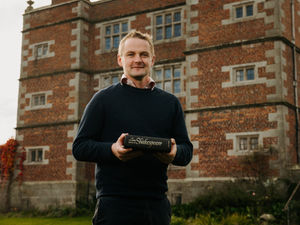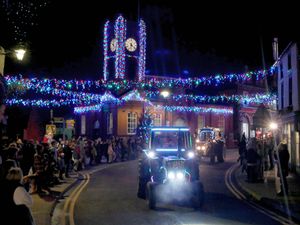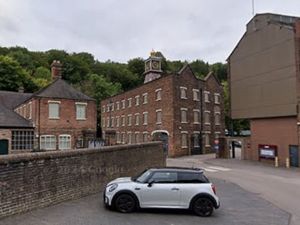Hopes Shropshire could revive its reputation as a 'Grand Tour' cultural destination
News that Shropshire has been hailed as one of the top 10 places to watch for holiday destinations is no surprise - it's hardly the first time the county has been popular for visitors.

For in the 17th through 19th centuries Shropshire was the destination of the English Grand Tour, a traditional trip through cultural sites for upper-class English men. Now historians hope the renewed interest will bring people to some of the historic gems in the county - among them Soulton Hall in Wem.
Tim Ashton from Soulton Hall said: "Back in Tudor times some of the most powerful Protestant merchants lived in Shropshire. When Henry VIII split the English church from Rome, Protestants from Germany were interested in how their new allied superpower worked.
"Over time this grew into a set route, which started in the ports and on the beaches of Essex in the east, and reached its culmination at Soulton Hall near Wem - the home of Sir Rowland Hill, merchant, Lord Mayor of London, and publisher of the incredibly important Geneva Bible. The bible was worked on in exile in Switzerland during the reign of Queen Mary Tudor, and it was Sir Rowland who organised bringing it back over."
The links between Essex and Shropshire, at either end of the historic Grand Tour, are already strong.
James D. Wenn, an historian and country house consultant who also serves as a trustee of the Essex Cultural Diversity Project, said: "In Georgian times the architect Robert Adam built Mistley Towers - a church between two lighthouse-like towers - to make a grand entrance to England in north Essex.
"Meanwhile in north Shropshire a huge column to Sir Rowland became the centrepiece of the world's first theme park - Hawkstone Follies, which is still a favourite with visitors today. Visitors could see Soulton Hall from the Follies."

Last year a group of the Essex Cultural Diversity Project's trustees visited Soulton Hall to have a look for themselves.
"Essex is galvanised by this story, and we are interested in seeing how Shropshire can resume its role as the destination of the Grand Tour that we start in Essex. The implications for the economy of both counties is exciting.
"In Essex we are very proud of being the 'gateway to England'. We recently demonstrated this with our celebrations of the Empire Windrush at Tilbury, but the story goes back a lot further than that.
"The main road that runs through Essex - through Colchester, Chelmsford and on to London - throngs today with vibrant arts projects and carnivals on our high streets, but this only reflects the long history of the world's great and good, including royalty, who travelled this way, on a set loop whose destination was Shropshire - both to see the Industrial Revolution in action at Ironbridge, and to see culture and spirituality at Hawkstone, overlooking Soulton Hall."
The story of Sir Rowland and Soulton was even taken up by Shakespeare in his play, As You Like It.
Tim said: "Plans are in progress to construct a miniature Iron Bridge at Soulton, to allow visitors to access the As You Like It Wood - where you can even see some of the famous Severn otters, who live in the brook."




